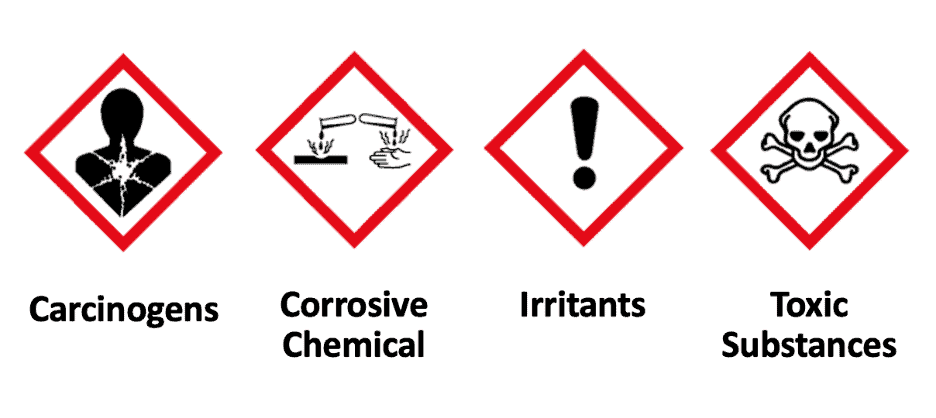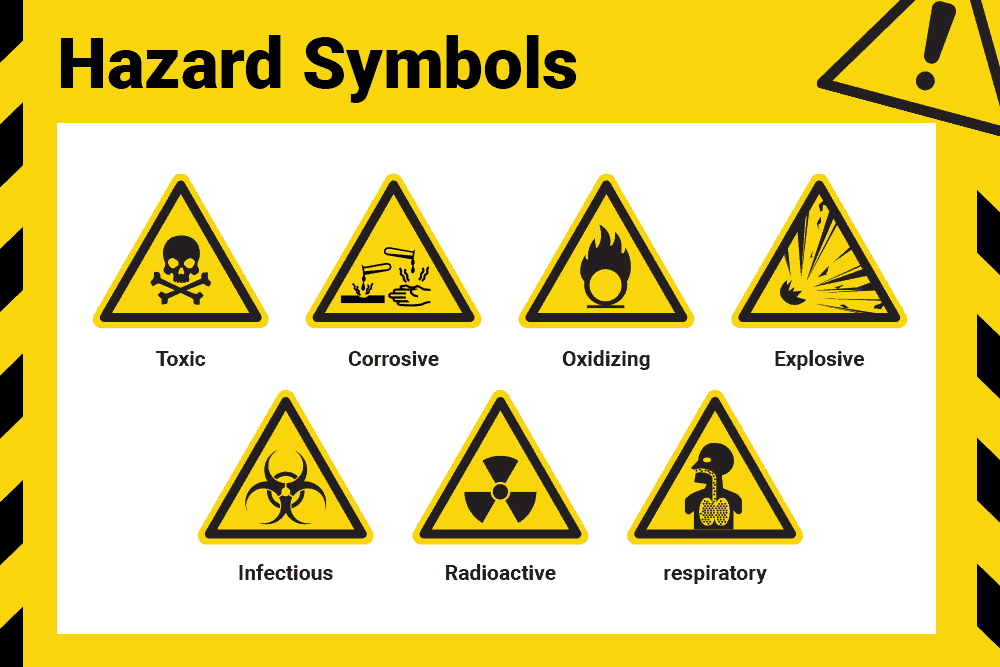
Many hazardous substances are used in workplaces. If these substances are uncontrollably released, they can have devastating consequences for personnel, premises and the environment.
A spill kit can be used to control hazardous substances should they spill or leak. This guide explains how spill kits can be used to help control hazardous substances and prevent harm to personnel and the environment.
What is a Spill Kit?
A spill kit is a set of equipment designed to remove hazardous substances quickly and efficiently should they spill. It is intended for use on small spills or leaks of various substances.
The materials in a spill kit can be used to limit the spread of the substance so it can be neutralised and disposed of.
What is a Spill Kit Made Of?
Although different spill kits are made of specific materials to deal with specific hazards, the contents of kits are generally as follows:
- A bin to dispose of contaminated materials
- Disposable PPE:
- Safety goggles
- Disposable gloves
- Disposable waste bags
- Labels to indicate the contents of the waste bags
- Caution tape
- Twist ties
- Absorbent socks, pads or pillows
Spill kits should be inspected every six months to ensure they’re replenished and up to date.
Where are Spill Kits Found?
Spill kits are found in workplaces, wherever hazardous substances are present.
These can range from warehouses where they’re stored to laboratories where they’re being used. Places like mechanic’s garages and workshops should have them due to the amounts of diesel or petrol on site.
They can also be found in healthcare environments where there is a heightened risk of harm, as well as in places like construction sites, commercial kitchens, and restaurants.
The primary use for a spill kit in these workplaces is to neutralise the threat of harmful substances spreading to other areas.
How to Use a Spill Kit
All hazardous spills should be handled by personnel who are adequately trained to do so and who have the relevant equipment.
Here are the steps for using a spill kit:
- Call for medical help if anyone has been injured by the spill. Call the fire brigade if there is a fire or the spill is large.
- Check you have enough material to deal with the size of the spill.
- Put up caution tape to warn people.
- Protect any floor drains with spill socks.
- Don PPE.
- Place absorbents onto the spill. Start on the outside of the spill and move towards the middle.
- Collect absorbents in a bag. Label the bag as hazardous.
- Use extra caution in regard to shards of glass or chemical fumes.
- Decontaminate the area with disinfectant and spill pads.
- Collect the pads in the same labelled bag as before.
- Remove PPE and place it in the bag. Seal it with a twist tie.
- Make sure to replenish the kit.
For more information regarding emergency response and spill control, you can visit the Health and Safety Executive (HSE) website.
What is a Spill Kit Used For?
Types of hazardous substances at work spill kits are used for include:
- Carcinogens
- Corrosive chemicals
- Irritants
- Toxic substances
Suppliers of products that contain hazardous substances must put hazard symbols on containers, which provide you with important safety information. These hazard symbols look like this:

Specific types of hazardous substances you may come across include:
- Pesticides
- Acids
- Alkaline substances
- Oils, diesel and petrol products
- Disinfectants
- Sewage
- Bodily fluids
In addition to these product labels, employers must also provide information in the workplace. These include hazard symbols that can be placed on walls and machines and in all the areas where hazardous substances are handled. These symbols look like this:

Hazardous substances range from things that can poison you, catch fire or damage the respiratory system if breathed in. They can pose slipping hazards or even a threat to life.
For a more comprehensive look at hazard symbols, visit the European Commission website.
Types of Spill Kits
There are a variety of spill kits available depending on the substance.
Your workplace’s Control of Substances Hazardous to Health (COSHH) risk assessment will identify potential hazards and prepare you for dealing with spilt substances.
The main spill kits available are:
- Biohazard and Laboratory
- Oil and Fuel
- Chemical
- Maintenance and Universal
- Specialized Spill Response Kits:
- Spill kits for Vehicles
- Mini spill kits
- Mobile spill kits
What Workplaces Require Spill Kits?
Any workplace where hazardous substances are present must have spill kits.
Examples of common work environments that require spill kits include:
- Manufacturing plants
- Laboratories
- Warehouses
- Mechanics and garages
- Construction sites
- Healthcare settings
- Restaurants and commercial kitchens
- Agricultural sites
What the Law Says
While the law doesn’t specifically mandate the presence of spill kits in all workplaces, several regulations and guidelines require effective spill response measures to prevent risks to health and safety.
Under COSHH, employers are required to implement appropriate control measures, such as spill kits, against hazardous substances. Several other pieces of legislation support this requirement, including the Control of Major Accident Hazards (COMAH) Regulations and the Health and Safety at Work etc. Act 1974.
Spill Kits in Healthcare
A number of specific spill kits are utilised in a healthcare setting. Substances found in these settings could include bodily fluids and drugs.
Hospitals have high numbers of staff, visitors and patients who are at risk. The main types of spill kits found in hospitals include:
- Chemical spill kits
- Body Fluid spill kit
- Urine and Vomit spill kits
- Chemotherapy spill kits
- Blood spill kits
- Biohazard spill kits
For a course on how to use bodily fluid spill kits, visit the Human Focus website.
Avoiding Consequences
When hazardous substances are spilt, they create a variety of consequences, particularly if they are not cleaned up appropriately. These consequences are:
Health
Exposure to hazardous substances can have negative health effects on anyone in the vicinity and those in the wider area if the spill is allowed to spread.
Short-term health effects involve things like:
- Skin and eye irritation
- Physical illness
- Chemical burns
- Poisoning
Spills can also present a slipping hazard, which can lead to bruises and broken bones. Long-term effects can include severe illnesses and debilitating diseases such as cancer.
Financial
This can include direct costs, such as fines for breaches in environmental and health and safety legislation and the cost of cleaning up the spill itself. As well as indirect costs, such as damage to an organisation’s reputation and the increased cost of insurance.
Environmental
If a spill gets into the wider environment, it can have devastating effects on ecosystems, destroying plants and wildlife. It can also impact things like groundwater, making it unsafe for human consumption or poisoning the land itself, making it unsafe or unable to produce crops.
Summary
The information in this guide should help you better understand spill kits and their uses. A hazardous substance can cause considerable harm, but it can be dealt with if you have the means and the know-how to counteract the threat of spillage.
For a course on how to clean hazardous substances, visit the Human Focus website.






















































































































































































































































































































































































































































































































































































































































































































































